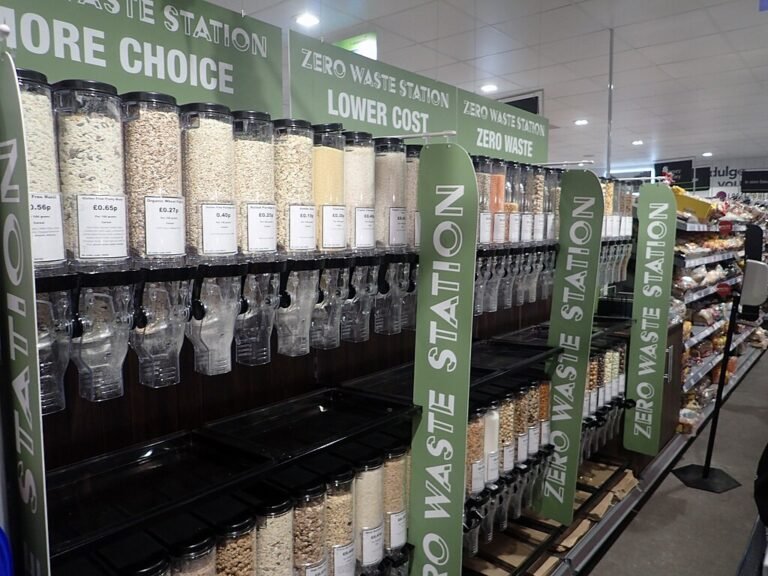Green Labelling: Definitions, Examples, and Sustainability Insights
Have you ever picked up a product because it claimed to be “eco-friendly” or “organic,” only to later wonder if it was actually better for the planet? You’re not alone. These days, it feels like every brand is jumping on the sustainability bandwagon, but not all green claims are created equal. Some labels genuinely reflect environmentally responsible practices, while others are just clever marketing tricks—also known as “greenwashing.”
Green labelling is meant to help consumers like us make informed choices. When done right, it gives us the power to support businesses that are truly making a difference. But when done wrong, it can mislead people into thinking they’re making sustainable choices when they’re not.
This guide will break down everything you need to know about green labelling, from trustworthy certifications to the sneaky tactics of greenwashing. With real-world examples, expert insights, and practical advice, you’ll walk away with the confidence to spot authentic eco-labels and make choices that align with your values.

In This Article
- What Is Green Labelling?
- Types of Green Labels: The Good, the Bad, and the Misleading
- Greenwashing: The Dark Side of Green Labelling
- Global Regulations on Green Labelling
- Actionable Steps: How to Make Informed Sustainable Choices
- Conclusion
What Is Green Labelling?
Green labelling refers to a certification or claim on a product that signifies its environmental benefits. These labels are often issued by third-party organisations and indicate compliance with sustainability standards, such as reduced carbon emissions, ethical sourcing, or biodegradability.
Think of green labelling as a shortcut for making responsible choices. Instead of spending hours researching whether a product is sustainably sourced or produced with minimal harm to the planet, a reliable certification does the work for you. But here’s the catch—not all green labels are created equal. Some are backed by strict regulations and independent audits, while others are just clever marketing.
According to a 2023 Nielsen study, 73% of global consumers say they would change their consumption habits to reduce environmental impact. That’s a massive shift in the way we buy and live. But with so many brands jumping on the sustainability trend, spotting real eco-friendly products can be overwhelming. Many consumers want to make greener choices but feel lost in a sea of vague claims and misleading labels.
Expert Insight: Expert Insight: “Third-party verification is crucial in green labeling to ensure the credibility of environmental claims. Without it, companies risk eroding consumer trust and undermining those adhering to the rules.” — Federal Trade Commission (FTC).
When a label comes from a well-respected organisation—like Energy Star for appliances, Fair Trade for coffee, or Cradle to Cradle for manufacturing—it carries real weight. These labels ensure that a product meets environmental and ethical standards, making it easier for you to shop with confidence.
Types of Green Labels: The Good, the Bad, and the Misleading
1. Certified Third-Party Labels (Most Reliable)
These are the gold standard of green labelling. They come from independent organisations that have strict environmental and ethical standards. If you see one of these labels, you can feel confident that the product meets genuine sustainability criteria.
- Energy Star – Found on appliances, electronics, and even buildings, this U.S. government-backed label guarantees energy efficiency.
- Fair Trade Certified – This label means workers were paid fairly, and sustainable farming methods were used.
- Rainforest Alliance Certified – Common on coffee, tea, and chocolate, this ensures farming supports biodiversity and fair wages.
- Cradle to Cradle Certified – Focuses on products designed to be reused or safely recycled, promoting a circular economy.
Case Study: Energy Star’s Impact on Energy Savings
| Year | U.S. Energy Savings (kWh) | Consumer Savings (Billion USD) |
|---|---|---|
| 2020 | 500 billion | $39 |
| 2022 | 600 billion | $50 |
According to the U.S. Department of Energy, Energy Star-certified appliances reduce household energy use by up to 30%. That’s a win-win—lower electricity bills and a smaller carbon footprint.
2. Self-Declared Environmental Claims (Proceed with Caution)
Some brands create their own eco-labels without outside verification. While they may sound good, there’s no one checking if their claims are true. This can lead to greenwashing—when companies exaggerate or mislead consumers about their sustainability efforts.
Example: The “100% Natural” Dilemma
Many personal care products boast of being “100% natural.” But without a legal definition, this phrase is meaningless. A Federal Trade Commission (FTC) investigation found that many “natural” products still contain synthetic chemicals. If there’s no third-party certification, be sceptical.
3. Industry-Specific Eco-Certifications
Certain industries have their own sustainability labels, which can be helpful when shopping for specific types of products.
- LEED Certification – Recognised in construction, it indicates buildings are energy-efficient and environmentally friendly.
- OEKO-TEX Standard 100 – Found on clothing and textiles, this guarantees products are free from harmful substances.
- B Corp Certification – Awarded to companies that meet high social and environmental responsibility standards.
Learn More: What Is Lifecycle Analysis?
Greenwashing: The Dark Side of Green Labelling
Greenwashing occurs when companies mislead consumers about their environmental impact, making products seem greener than they actually are. It’s frustrating and unethical, yet it happens all the time. A 2021 European Commission report found that 42% of green claims were exaggerated, false, or deceptive. That means nearly half of the “eco-friendly” products you see on shelves might not be as sustainable as they claim.
Real-World Example: The Volkswagen Emissions Scandal
One of the biggest cases of greenwashing came in 2015 when Volkswagen was exposed for cheating emissions tests. The company marketed its diesel cars as “clean” and environmentally friendly, claiming they met strict air quality standards. In reality, their vehicles emitted up to 40 times the legal limit of nitrogen oxides—pollutants contributing to respiratory diseases and smog. When the truth came out, Volkswagen faced $30 billion in fines and massive damage to its reputation. It was a wake-up call for the auto industry and consumers alike.
How to Spot Greenwashing
To avoid being misled, watch out for these common greenwashing tactics:
- Vague Language: Words like eco-friendly, green, or natural sound great but mean nothing without specifics.
- Lack of Certification: Real sustainability claims usually have third-party certifications.
- False Imagery: Just because a package has leaves, earth tones, or a “green” logo doesn’t mean it’s truly sustainable.
- Hidden Trade-offs: Some products highlight one green feature while ignoring their overall impact. For example, a “biodegradable” product wrapped in plastic packaging defeats its purpose.
Being an informed consumer is key. If something seems too good to be true, it probably is.
Global Regulations on Green Labelling
Governments around the world are stepping up to fight misleading eco-labels. If companies want to claim their products are sustainable, they need to follow strict guidelines—or face legal action. Here’s how some major regions are handling it:
1. European Union (EU): Green Claims Directive
The EU’s Green Claims Directive ensures that any product marketed as “eco-friendly” or “sustainable” is backed by scientific evidence. Companies making false claims can face heavy fines. This directive is crucial in holding businesses accountable and preventing greenwashing.
2. United States (USA): FTC Green Guides
The Federal Trade Commission (FTC) has set up the Green Guides, a framework that defines what companies can and cannot claim about their products. This helps consumers avoid being misled by vague terms like “all-natural” or “biodegradable.”
3. Australia: ACCC Sustainability Guidelines
The Australian Competition & Consumer Commission (ACCC) has its own Sustainability Guidelines aimed at preventing deceptive environmental claims. If a company falsely advertises a product as “green,” it can be penalised under consumer protection laws.
Understanding these regulations helps consumers make smarter choices and encourages businesses to be more transparent. Always check whether a company’s sustainability claims align with official guidelines, because a true green label should stand up to scrutiny.
Learn More: When did Sustainability Become Popular in Business?
Actionable Steps: How to Make Informed Sustainable Choices
Making sustainable choices shouldn’t feel like a guessing game. Here are some simple yet powerful steps to ensure your purchases truly benefit the environment.
- Look for Certified Labels: If a product claims to be sustainable, check if it has a verified label like Fair Trade, Energy Star, or B Corp. These third-party certifications ensure companies meet strict environmental and ethical standards.
- Research the Company’s Sustainability Report: Go beyond the label. Many responsible brands publish detailed sustainability reports outlining their environmental impact, carbon footprint, and ethical sourcing. If a company isn’t transparent, that’s a red flag.
- Use Eco-Rating Apps: Apps like Good On You (for fashion) and Yuka (for food & cosmetics) can help you quickly verify sustainability claims. These tools analyse products based on ethical sourcing, environmental impact, and health factors.
- Avoid Over-Packaged “Green” Products: Just because a product is labelled as “organic” or “eco-friendly” doesn’t mean it’s sustainable if it comes wrapped in layers of plastic. Look for minimal, biodegradable, or recyclable packaging.
- Support Brands with Transparent Supply Chains: Brands that openly share where and how they source their materials, treat their workers, and reduce their carbon footprint are more likely to be trustworthy. Transparency equals accountability.
Conclusion
Green labelling, when done right, empowers both businesses and consumers to drive real environmental Final Thoughts: The Power of Green Labelling in Shaping a Sustainable Future
When done right, green labelling empowers businesses and consumers to drive real environmental change. By choosing verified eco-labels and staying vigilant against greenwashing, we can collectively support a more sustainable world.
“Achieving meaningful carbon reductions requires industry-wide collaboration and transparency throughout the supply chain. The future of sustainability isn’t just about choosing greener products—it’s about creating a system where transparency and accountability become the norm.” — Fredrika Klarén, Head of Sustainability at Polestar
The next time you pick up a product with a green label, take a moment to verify it. Your choices matter, and with the right knowledge, you can make a real impact.







